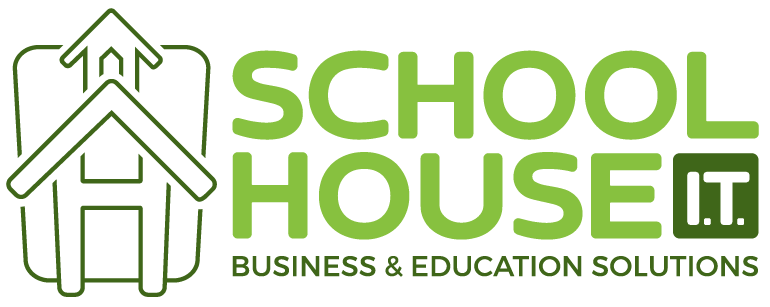Navigating Data Breach Notifications: A Guide for Montana’s Education Sector
Data breaches are a concern across all industries and the education sector in Montana is no exception. With schools and edtech platforms handling sensitive data—including student records, staff information, and even financial details—administrators and technology providers must be prepared to protect this information and respond when a breach occurs.
For K12 administrators and edtech professionals, understanding state laws and best practices for data security is critical. This guide outlines what constitutes a data breach, your organization’s legal responsibilities under Montana law, and proactive steps to protect data in your educational environment.
What Is a Data Breach?
A data breach occurs when sensitive, confidential, or protected information is accessed or disclosed without proper authorization. For schools and edtech companies, this could involve the accidental exposure of student data, the hacking of staff payroll systems, or breaches in educational software databases.The consequences of a data breach can be serious, ranging from loss of trust among parents and students to financial penalties, legal action, and reputational damage. And since educational institutions typically store enormous amounts of sensitive data, they are increasingly becoming prime targets for cyberattacks.
Montana’s Legal Responsibilities for Data Breach Notifications
Montana has specific laws guiding businesses and institutions on how to handle data breaches. For educational organizations, compliance with Montana Code Annotated section 30-14-1704 is especially important. Here’s are some components the law requires you to do when a data breach occurs:
- Immediate Notification: Notify affected individuals as quickly as possible unless a law enforcement agency determines that it would impede an active investigation.
- Content of Notification: Clearly explain what happened, what data was exposed, and steps the impacted individuals can take to protect themselves.
- Reporting to the State Attorney General: If the breach affects more than 500 Montanans, the incident must also be reported to the Montana Attorney General’s Consumer Protection Office.
Failing to comply with these directives can result in legal consequences and further reputational damage to your institution.
Challenges in Meeting Notification Requirements
For K12 administrators and edtech companies, meeting these requirements is not always straightforward. Some of the common challenges include:
- Delayed Detection: Many breaches go unnoticed for weeks or even months, making timely notifications difficult.
- Lack of IT Resources: Schools, especially those in rural areas, often struggle with limited IT support and expertise to identify and respond to breaches effectively.
- Complex Data Systems: With multiple vendors and software systems handling data, determining which parties are responsible for the breach can be complicated.
- Maintaining Trust: Communicating a breach transparently without causing alarm is a delicate balance.
Understanding these challenges is a critical first step toward building a strong data breach response plan
Best Practices for Handling Data Breaches
The best way to handle a data breach is to prepare for it before it happens. Here are practical steps that administrators in Montana can take to safeguard sensitive data and respond effectively to breaches:
- Conduct Regular Security Audits: Review your organization’s cybersecurity measures regularly. Identify vulnerabilities in your systems and address them promptly.
- Establish a Clear Response Plan: Develop a detailed incident response plan outlining steps to take in the event of a breach. This plan should include who to notify, timelines for reporting, and a crisis communication strategy.
- Train Staff and Educators: Educate your team on cybersecurity best practices, including identifying phishing scams and using strong passwords. Administrators, teachers, and IT staff should all understand their role in safeguarding data.
- Partner with Trustworthy Vendors: Ensure that your edtech partners adhere to strict data privacy and security regulations. Ask for transparency about how they protect and store the information they manage.
- Encrypt Your Data: Encryption ensures that even if data is accessed by unauthorized individuals, it cannot be easily exploited. Make this a standard practice for sensitive information residing in school or vendor systems.
- Test Your Response Plan: Simulate a data breach to evaluate how well your team is prepared to handle the situation. Use the results to refine your response plan and improve readiness.
By taking these steps today, you can strengthen your defenses and minimize the impact of potential breaches in the future.
Stay Vigilant and Take Action
Navigating data breaches in Montana requires a proactive and informed approach. Understanding your responsibilities under Montana Code Annotated section 30-14-1704 is only the beginning—you must also invest in best practices and maintain a strong cybersecurity posture.
At the core of these efforts lies a shared goal among K12 administrators and edtech providers: protecting the trust that students, parents, and educators place in your organization’s ability to secure their data.
Want Additional Support?
Start by evaluating your current data protection measures with our specialized services tailored specifically for educational institutions. Our audits are designed to provide a comprehensive assessment of your organization’s security posture, technology, and both policies and procedures. This service identifies potential vulnerabilities, evaluates compliance with data protection, and ensures your systems and processes are equipped to handle cyber threats.
By partnering with our team at Schoolhouse IT, you’ll gain actionable insights and practical recommendations to enhance your technology and processes. Our team understands the unique challenges faced by schools and districts in Montana, and we’re here to help you every step of the way. Together, we can create a safe, secure, and trustworthy digital environment for students, parents, and educators alike.
Reach out today to take the next step: www.schoolhouseit.com
